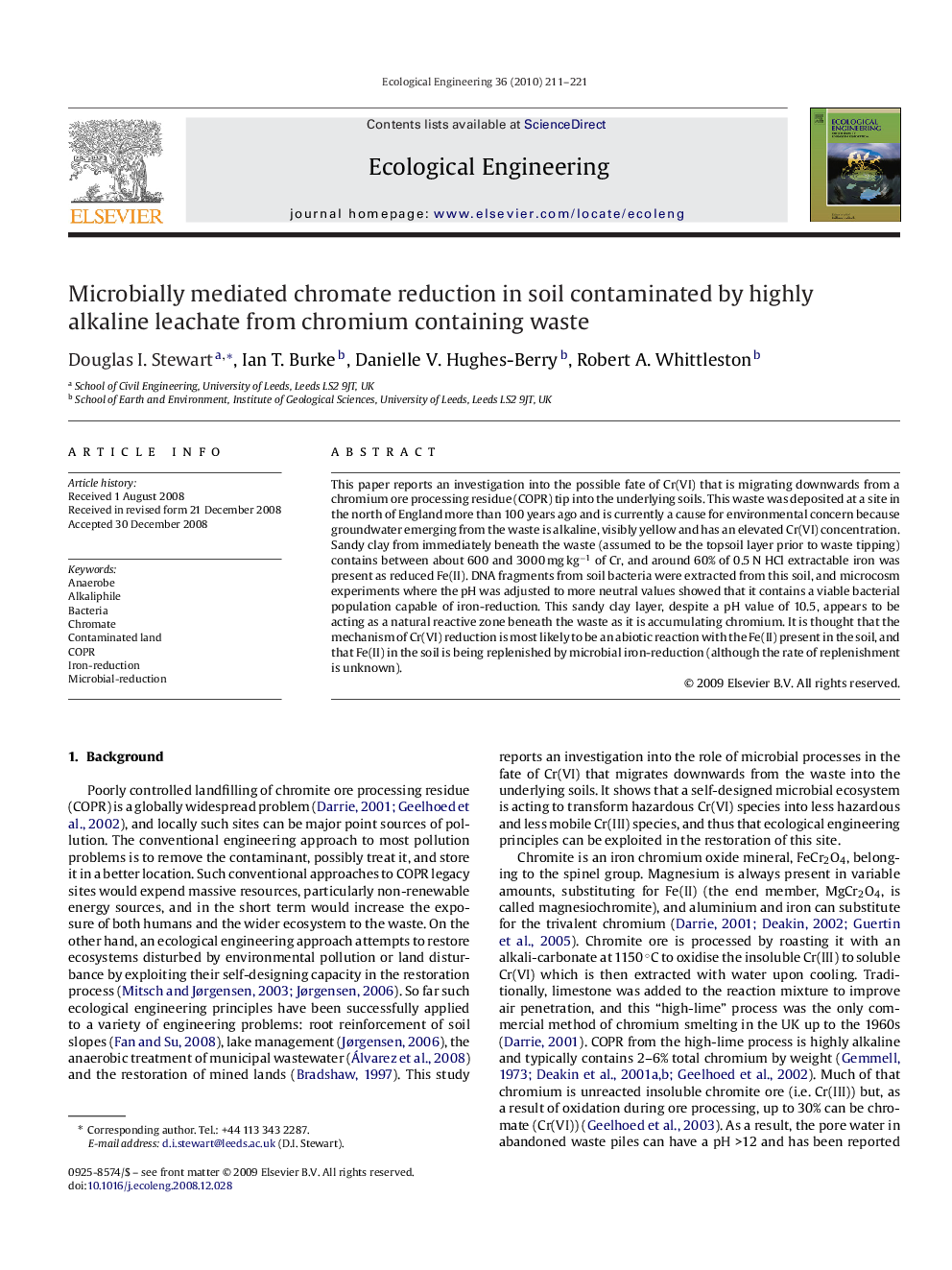| Article ID | Journal | Published Year | Pages | File Type |
|---|---|---|---|---|
| 4390528 | Ecological Engineering | 2010 | 11 Pages |
This paper reports an investigation into the possible fate of Cr(VI) that is migrating downwards from a chromium ore processing residue (COPR) tip into the underlying soils. This waste was deposited at a site in the north of England more than 100 years ago and is currently a cause for environmental concern because groundwater emerging from the waste is alkaline, visibly yellow and has an elevated Cr(VI) concentration. Sandy clay from immediately beneath the waste (assumed to be the topsoil layer prior to waste tipping) contains between about 600 and 3000 mg kg−1 of Cr, and around 60% of 0.5 N HCl extractable iron was present as reduced Fe(II). DNA fragments from soil bacteria were extracted from this soil, and microcosm experiments where the pH was adjusted to more neutral values showed that it contains a viable bacterial population capable of iron-reduction. This sandy clay layer, despite a pH value of 10.5, appears to be acting as a natural reactive zone beneath the waste as it is accumulating chromium. It is thought that the mechanism of Cr(VI) reduction is most likely to be an abiotic reaction with the Fe(II) present in the soil, and that Fe(II) in the soil is being replenished by microbial iron-reduction (although the rate of replenishment is unknown).
